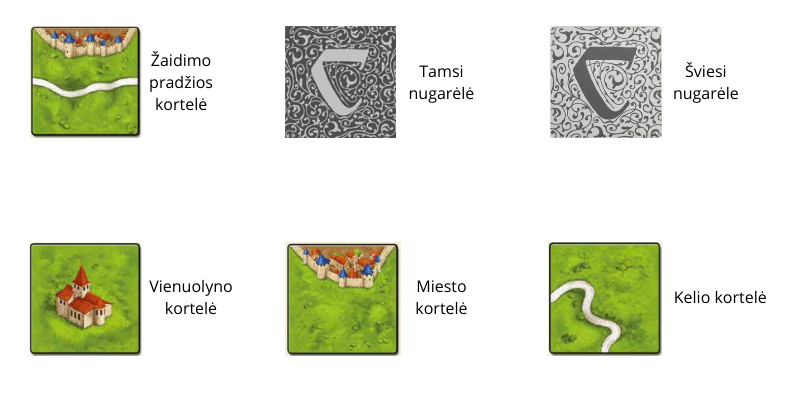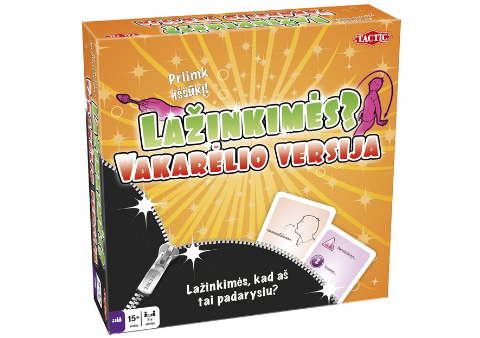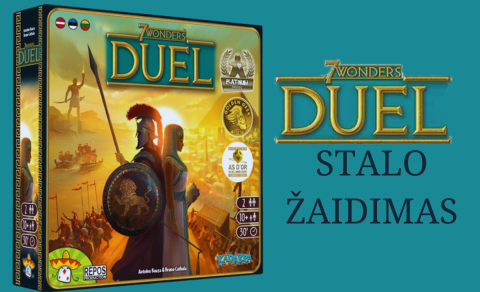Carcassonne was launched in Germany in 2000. It tells the story of the fortress of Carcassonne in Southern France. This fortress is famous for its magnificent defensive wall, which is more than 3 kilometres long. Interestingly, it is thanks to this game that Carcassonne has flourished as a tourist destination. Carcassonne 1 and 2 - Rules.

Other strategy board games
Once you've tried at least one strategy game, you want to play and play and play. If you want, you can try other popular games that might become your favourites:
Ticket to ride trains. You'll travel by train across Europe and try to build the longest route. Maybe it will be Moscow - Berlin? Or maybe Vilnius - Riga? Try it!
Catan - Do you like building settlements and roads? In this game, you'll collect raw materials and use them to build. What's in it for you, you say? Well, that's what really counts - roads, settlements and cities earn you Victory Points. Hurry up, because the first one to score 10 Victory Points will be declared the winner!
Carcassonne rules and preparation for the game
The game set includes:
- 72 land cards showing cities, roads, fields and monasteries;
- 40 subordinate figures (8 each in yellow, green, red, blue and black);
- scoring board;
- game instructions.
If Carcassonne is a river game, the pack also contains 12 river cards and 5 abbot pieces (yellow, green, red, blue and black).
Frequently asked questions
❓ How many people can play Carcassonne?
According to the Carcassonne rules, you can play from 2 to 5 people.
❓ How old can I play Carcassonne?
Carcassonne is a game for both young and old. With simple rules, it can be played from 7 years age.
❓ How long does it take to play one game of Carcassonne?
The game usually lasts from 40 to 60 minutes.
Carcassonne. How to play?
Players first choose the pieces of the desired colour. One of them must be placed on the scoring board and the remaining seven will be played with. The starting card is then turned over and placed in a place within reach of all players. The starting card is distinguished from all the others by its dark back. The other cards are turned over and shuffled.
Each player draws one card in the agreed order and places it face up to extend the existing Carcassonne map. A road cannot refer to a town, a town cannot refer to a field, a field cannot refer to a road and vice versa. A game piece can be placed on the card you have just placed to help you score points. Depending on where a subordinate is placed, he will perform certain duties. On knees the figurine becomes a robber, on the location - knight, on Outdoor - a peasant, and on Monastery - a monk. Subordinates can only be placed on unoccupied sites.
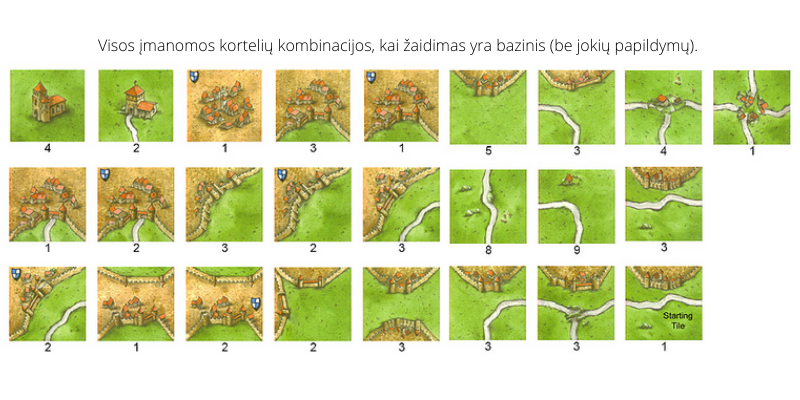
Monastery
The monastery is always shown in the centre of the card. It should be placed next to the others in a way that fits the existing Carcassonne map and connects to either a field or a road. The monastery is finished when it is covered on all sides by other cards. Each card around it scores 1 point, and the monastery card also scores 1 point. You have a total of 9 points and can now take back your subordinate.
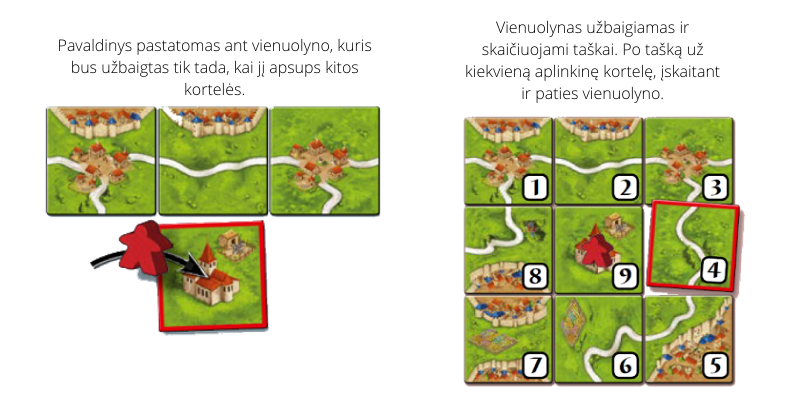
Cities
Once you receive a city card, you can combine it with an existing city and, if it is available, place your knight. If there is no city to start with, place the card next to a road or field. If you wish, you can place a piece and start building a new city. You cannot place a piece on an occupied object. When you have completed a city, you get 2 points for each card (an additional 2 points are awarded for each coat of arms in that city) and you can take your piece.
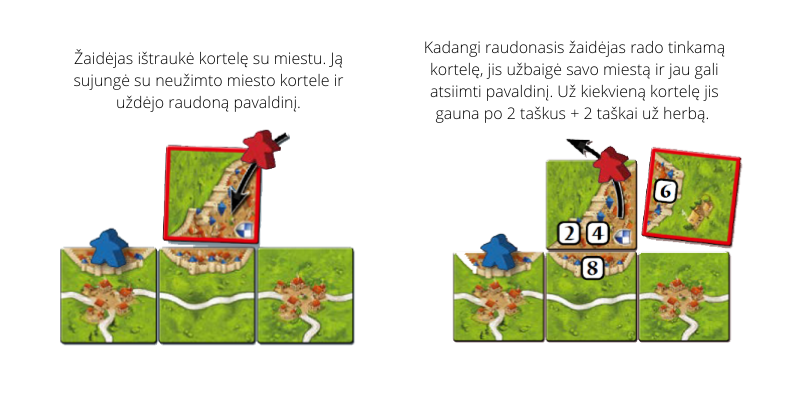
Directions
The road card is connected to another road or placed at a town, monastery or field. If the road is unoccupied, you can place a robber on it. A road ends when it enters a town or monastery, turns in a circle or reaches a crossroads. For each completed road card, you get 1 point and take your piece.
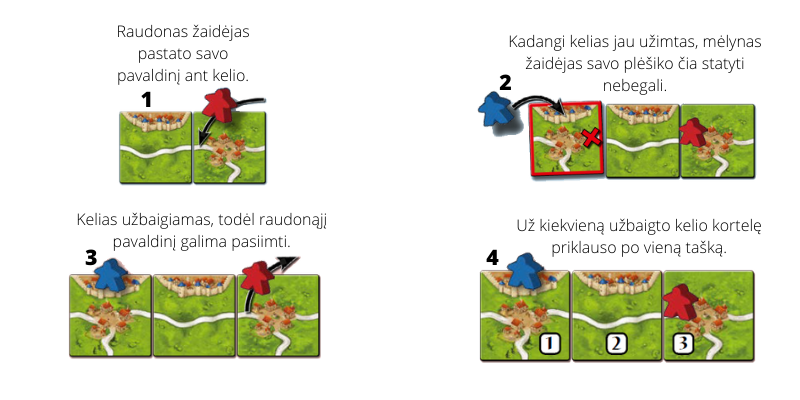
Field
When you place a game piece on a green area, it becomes a peasant. Peasants are not built, but are placed so that they cannot be removed until the end of the game. There are many different fields on the game map. They are separated by roads or towns.
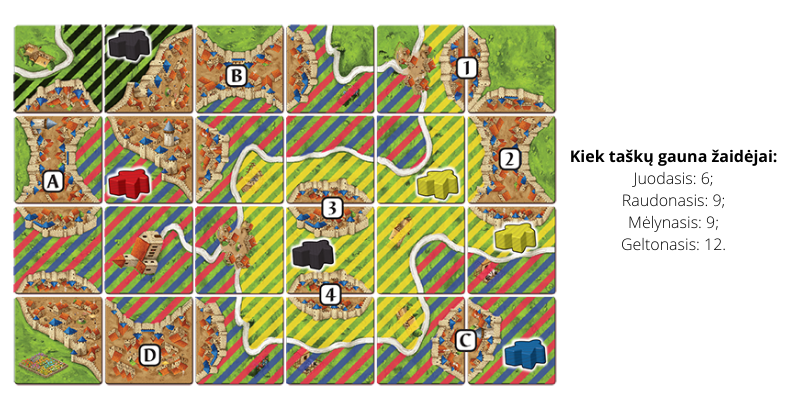
In the picture you can see the different coloured fields. The red and blue peasants belong to cities A, B, C and D. Since both players have one piece in that square, they get the same number of points. No points are awarded for City D, because it is incomplete. Towns 1, 2, 3 and 4 for the yellow peasant. For the yellow square there is one black player and two yellow players, so the yellow player wins and only the black player gets points. For the black peasant, the points for towns A and B count.
Multiple subordinates on a single Carcassonne object
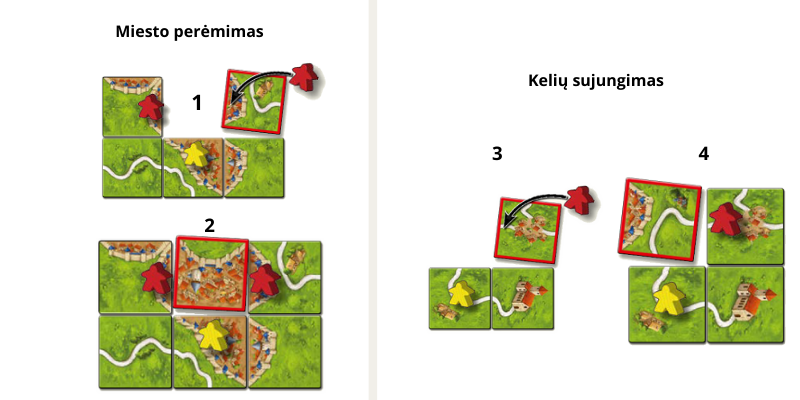
Sometimes stealing already occupied objects starts to make Carcassonne more interesting. The red player wants to take over a city that already has one red and one yellow piece on it (Figure 1). He creates Strategy and places his city card next to and on top of his knight. On his next turn, he receives a card suitable for connecting and completing the city (Figure 2).
Since there are more reds, only reds get points.
Another situation that occurs is the merging of different objects. The red player places the card and the subordinate next to the yellow player's already occupied path (Figure 3). During the next turn (Figure 4), the paths are merged into one and completed. Both players score points.
Carcassonne ends. Scoring
Carcassonne ends when the last playing card is dealt. Once you've played it, it's a shame to end it. Then it's time to count the points and start a new game.
The scoring is done using the board included in the game kit. Each player's piece passes through as many boxes as each completed object is worth throughout the game. If more than 50 points are scored, the piece is placed down and continues with the piece lying down. In this case, 50 points shall be added to the current score at the end of the game.
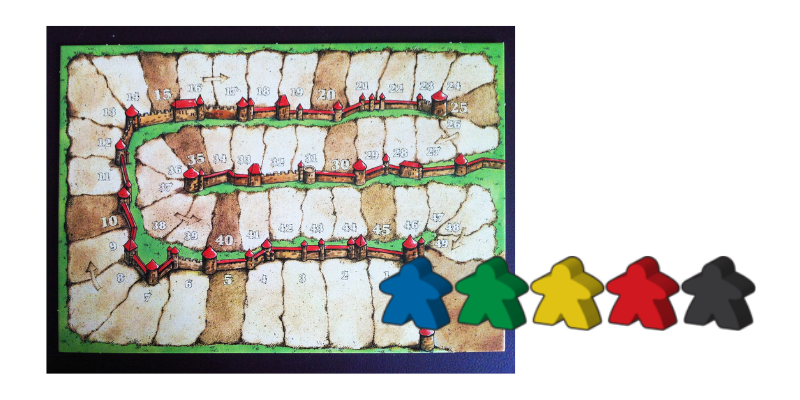
Points are scored for each city, road and monastery completed throughout the game.
City: 2 points per card + 2 points for each coat of arms in that city.
Directions: 1 point for each card.
Monastery: 1 point each for the card surrounding the monastery + 1 point for the monastery card itself.
At the end of the game, we count what remains unfinished and the values of the fields.
City: 1 point per card + 1 point for each coat of arms in that city.
Directions: 1 point per card.
Monastery: 1 point for the card surrounding the monastery + 1 point for the monastery card.
Field: 3 points for each completed city in that field.
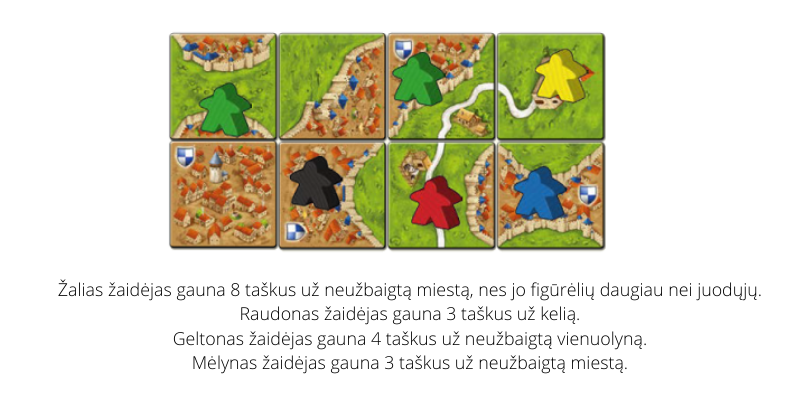
Haven't tried playing Carcassonne yet? For a full review of the game, click here.
The base game Carcassonne has two expansions: the river and the abbot
Preparing for the river game
Playing with the river, start card put it in the box, because it will not be needed. We take the river cards with black backs, flip them over and shuffle them (except for the spring and lake). After mixing, put them in a pile and put the lake card underneath. Use the source card as a starting card.
How to play?
One card at a time, draw a picture of the river. Once the river has descended, it cannot go up again and return to its starting point, forming a U-shaped bend. The cards are drawn until the river runs out of cards and the normal Carcassonne cards can be used. As the river is built, subordinates can be placed on towns, roads, monasteries and fields.
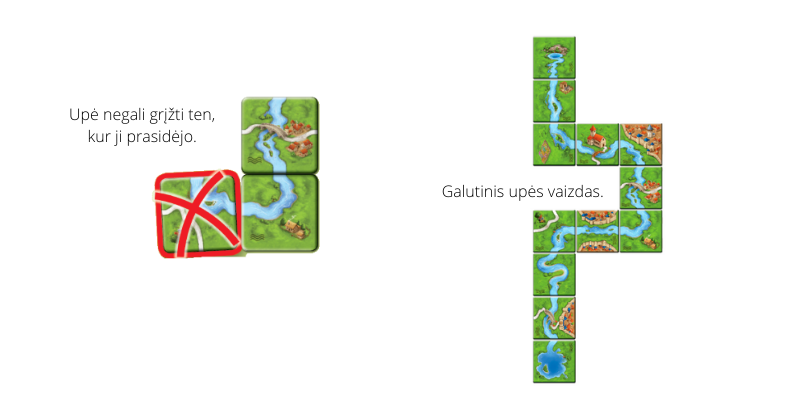
Carcassonne: Abbot
New in this game are abbot figures and images of gardens on regular cards.
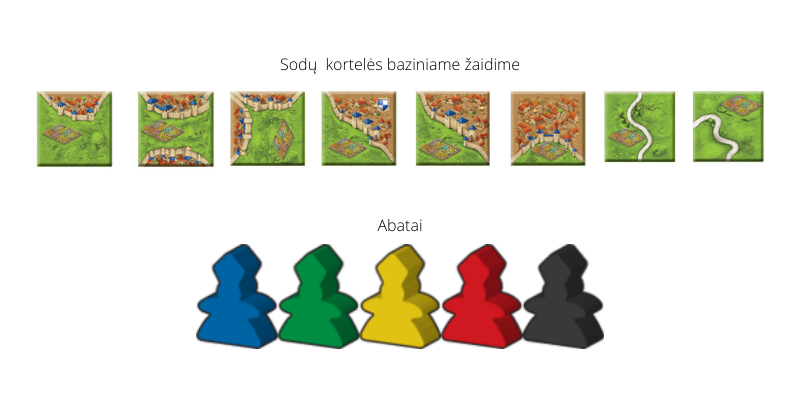
Once you've placed your garden or monastery card, you choose what to build on it. Only the Abbot can be placed on the Garden card, and either the Abbot or a Servant is placed on the Monastery card.
When a monastery or garden is surrounded by 8 cards, you take your piece and score 9 points.
Another thing Abbot excels at is scoring points even if you don't stop him from all sides with the card he is holding. Simply by laying down a land card but not wanting to place a subordinate on it, you can then withdraw the abbot and get as many points as he is worth at that time. If five other cards are placed around the Abbot card, you get 6 points.
